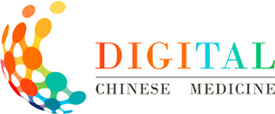Abstract:
Natural product is one of the sources of drugs in pharmaceutical industry, and one of the notable origin of natural product is the medicinal plants. Medicinal plants tend to cure some certain diseases and could be a source for potential drugs. The Department of Health of the Philippines approved 10 medicinal plants namely
Allium sativum (Garlic/Bawang),
Blumea balsamifera (Nagal camphor/sambong),
Cassia alata (Ringworm bush/akapulko),
Clinopodium douglasii (Mint/yerba Buena),
Ehretia microphylla (Scorpion bush/Tsaang Gubat),
Momordica charantia (Bitter Melon/Ampalaya),
Peperomia pellucida (Silver bush/ulasimang Bato),
Psidium guajava (Guava/Bayabas),
Quisqualis indica (Rangoon creeper/niyug-niyogan), and
Vitex negundo (Five-leaved Chaste Tree/lagundi). The review was conducted to show that these medicinal plants are capable in treating infections and some diseases. It was found that
Allium sativum for the treatmet of wounds, hypertension and tootache;
Blumea balsimifera is effective in diuretic treatment for hypertension;
Cassia alata for the treatment of scabies, fungal infection, athlete's foot, tinea flava, ringworm;
Clinopodium douglasii for the treatment of muscle pain, arthritis, rheumatism, cough, headache
; Ehretia microphylla for the treatment of diarrhea and stomachache;
Momordica charantia for the treatment of diabetes mellitus;
Peperomia pellucida for the treatment of gout and rheumatism;
Psidium guajava for the treatment of wounds and diarrhea;
Quisqualis indica for anti-helmintic medicine; and
Vitex negundo for the treatment of cough, asthma, and fever. In conclusion, these 10 medicinal plants have natural products that can be used as source for potential drugs. However, there are still many species of ethnobotanical plants that are not yet investigated thoroughly and might be a source for potential drugs. Therefore, more investigations should be done in other species of plant, most especially for the plants with practical used.









 下载:
下载: